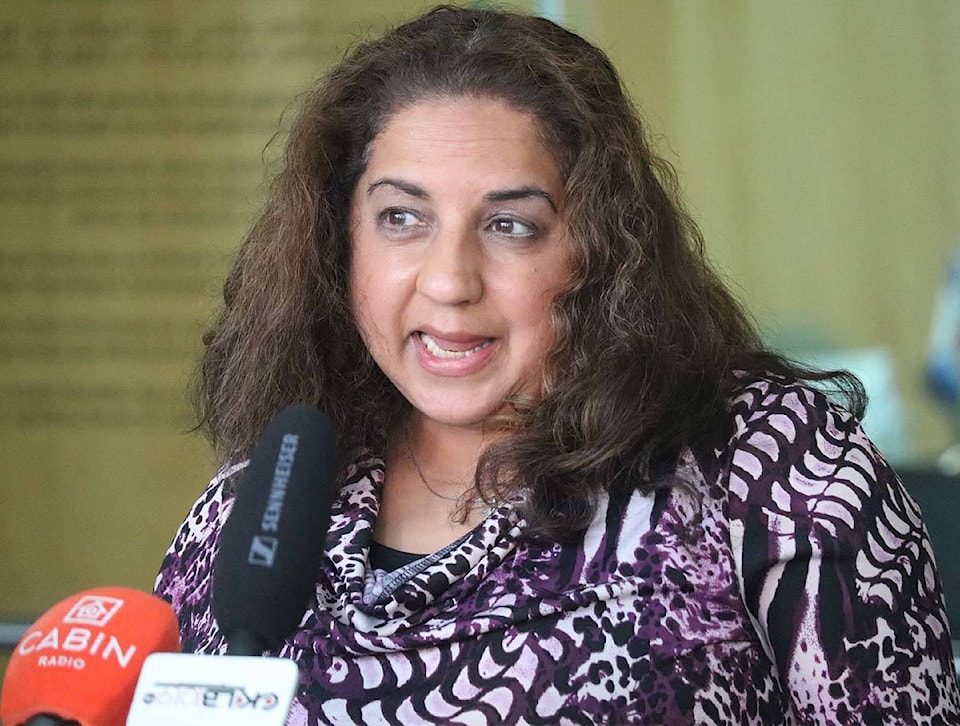Northern residents could be returning to normal life this fall — provided territorial vaccine rates increase and average daily cases of the virus drop below 1,000 a day in Canada, Chief Public Health Officer Dr. Kami Kandola said June 9.
Kandola joined Health and Social Services Minister Julie Green and Premier Caroline Cochrane for a news conference in the Great Hall of the NWT Legislative Assembly to announce the Emerging Wisely 2021: Step By Step document which roughly estimates timelines for lifting COVID-19 public health restrictions.
“All public health restrictions could be lifted mid to late fall,” Kandola said. “This means no self-isolation requirements for anyone, no public restrictions and no limited capacity in activities indoors or outdoors.”
Beginning immediately as of June 9, Kandola said restrictions on some outdoor activities like garage sales, farmers markets and parades can be eased with the territory’s current partial vaccination rate of 66 to 75 per cent.
“Gatherings of up to 200 people can take place with no restrictions,” Kandola said. “We can gather in larger numbers outdoors again.”
Other outdoor events, however, still pose too much risk considering the territory’s current vaccine coverage and will require special permission from the territory’s top doctor. Tnis includes funerals, celebrations of life and other events with over 200 people.
Prior to the announcement, people were allowed to gather outdoors up to a maximum of 50. Indoor gatherings, the next step in lifting restriction, is planned for late June when the school year ends and either full vaccination rates reach 66 to 75 per cent or the partial vaccination rate hits 75 per cent.
This is conditional, however, on vaccination coverage increasing among NWT residents 18 years and older.
“It means restaurants, stores, offices, and other buildings can return to near-normal capacity,” she said. “We can go over to people’s houses not in our bubble and host friends and family in our homes. We can look forward to family reunions and workplace get-togethers and parties.”
Indoor-gathering restrictions currently allow up to 25 people with plans that must be followed. Household get-togethers can have up to 10 people with a maximum five people from outside the home.
Self-isolation
Self-isolation requirements being eased for residents are expected to be the third step and take place sometime in “early summer” provided that vaccination rates increase across Canada are at least between 66 per cent and 75 per cent, and the average national case count falls below 1,000 cases per day, Kandola said.
“The recommendation advising against non-essential travel for NWT residents would then be rescinded,” she said.
Currently residents must self-isolate for eight days with a negative test on Day 8 if they are fully vaccinated. Otherwise people must still complete a 14-day isolation period.
According to the plan, leisure travel restrictions can be eased when full vaccination rates reach 75 per cent and there are less 1,000 daily new cases and 66 to 75 per cent partial vaccinations.
The final step of all restrictions lifted, can go ahead this fall provided people 12 years and older have a rate of 75 per cent full-vaccination rate and 66 to 75 per cent partial vaccination, with less than 1,000 daily new cases and 66 to 75 per cent full vaccination rates across the country.
This would ultimately mean that all restrictions — leisure travel, self-isolation, indoor and outdoor gatherings — would be lifted.
Moving toward personal responsibility
Kandola said the easing of restrictions will mean her office will transfer the responsibility to individuals to make the choices that are best for them.
“Just because we are easing restrictions, does not mean that the risk to you or your community having COVID-19 goes away,” she said.
“Once the restrictions are lifted, we must trust that you will do what is best for you and your family to protect yourself from the virus.”
The June 9 news conference in the Great Hall marked 15 months since Kandola, Premier Cochrane and then-Health-Minister Diane Archie first announced a state of emergency and public health restrictions in the same space.
